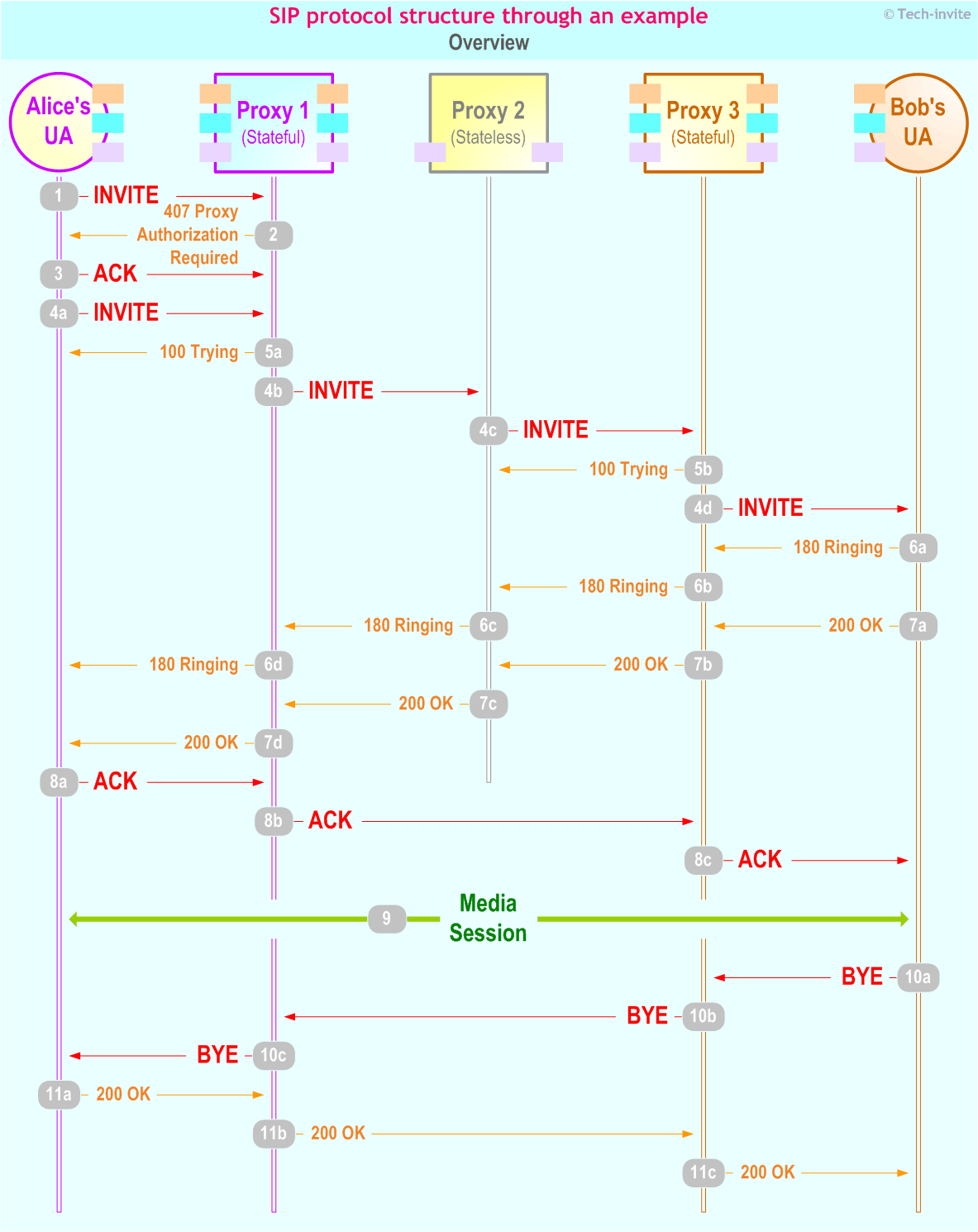
This example illustrates, as a slide show, the structure of the SIP protocol, as outlined in RFC 3261 – chapter 5:
![]() The lowest layer is the Transport layer. It defines how a Client sends requests and receives responses and how a Server receives requests and sends responses over the network. All SIP elements contain a transport layer.
The lowest layer is the Transport layer. It defines how a Client sends requests and receives responses and how a Server receives requests and sends responses over the network. All SIP elements contain a transport layer.
![]() The second layer is the Transaction layer. A Transaction is a request sent by a Client transaction (using the transport layer) to a Server transaction, along with all responses to that request sent from the server transaction back to the client. Any task that a user agent client (UAC) accomplishes takes place using a series of transactions. Stateless proxies do not contain a transaction layer.
The second layer is the Transaction layer. A Transaction is a request sent by a Client transaction (using the transport layer) to a Server transaction, along with all responses to that request sent from the server transaction back to the client. Any task that a user agent client (UAC) accomplishes takes place using a series of transactions. Stateless proxies do not contain a transaction layer.
![]() The layer above the transaction layer is called the Transaction User (TU). Each of the SIP entities, except the stateless proxy, is a transaction user.
The layer above the transaction layer is called the Transaction User (TU). Each of the SIP entities, except the stateless proxy, is a transaction user.
In this example, the rejection of the first INVITE request, followed by a valid INVITE request, enables the analysis of the processing of the ACK for these two situations. It is assumed that both Proxy 1 and Proxy 3 stateful proxy servers are in the final signalling path because they requested it in the INVITE requests they routed on.